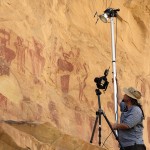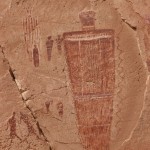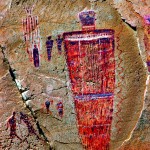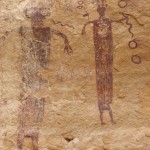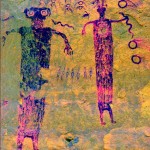 One problem surrounding the needs of cultural heritage research is the acquisition of static on-site photography, which may limit perceived detail in the artifacts later upon inspection. One method which allows re-lighting of artifacts during research is HP Labs researcher Tom Malzbender’s work in polynomial texture mapping, or PTM. With some consultation with Tom and the PTM pioneers at Cultural Heritage Imaging in fall of 2008, xRez Studio visited several key Native American rock art sites in the Colorado Plateau, among them Capitol Reef, Horseshoe Canyon, Sego Canyon, and the Rochester and Sinbad panels. Utilizing gigapixel image capture, multi-spectral infrared imaging, photo-cloud imaging, and PTM technique, xRez was able to test a working methodology for site capture of sensitive rock art resources which far surpass simple static photography. Several successful results were made, and sample interactive PTM’s are viewable as Java applets. Also utilized was Jon Harman’s excellent DStretch, which provides color matrix de-colleration to rock art images, helping reveal lost detail from weathering or the use of disparate painting substrates.
One problem surrounding the needs of cultural heritage research is the acquisition of static on-site photography, which may limit perceived detail in the artifacts later upon inspection. One method which allows re-lighting of artifacts during research is HP Labs researcher Tom Malzbender’s work in polynomial texture mapping, or PTM. With some consultation with Tom and the PTM pioneers at Cultural Heritage Imaging in fall of 2008, xRez Studio visited several key Native American rock art sites in the Colorado Plateau, among them Capitol Reef, Horseshoe Canyon, Sego Canyon, and the Rochester and Sinbad panels. Utilizing gigapixel image capture, multi-spectral infrared imaging, photo-cloud imaging, and PTM technique, xRez was able to test a working methodology for site capture of sensitive rock art resources which far surpass simple static photography. Several successful results were made, and sample interactive PTM’s are viewable as Java applets. Also utilized was Jon Harman’s excellent DStretch, which provides color matrix de-colleration to rock art images, helping reveal lost detail from weathering or the use of disparate painting substrates.
By viewing the PTM below you can see how it is much easier to see the details of an image where damage has occured.Click and drag on the image to move the light, right click for more features.



